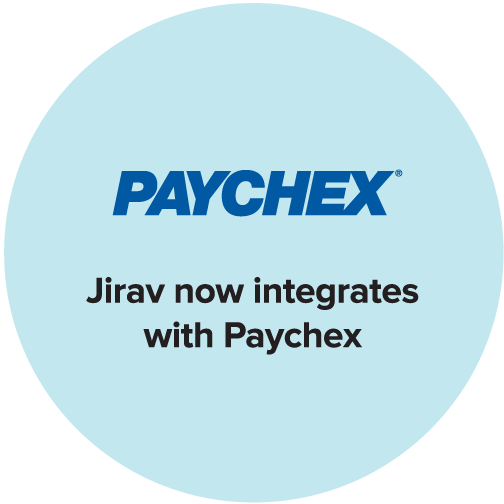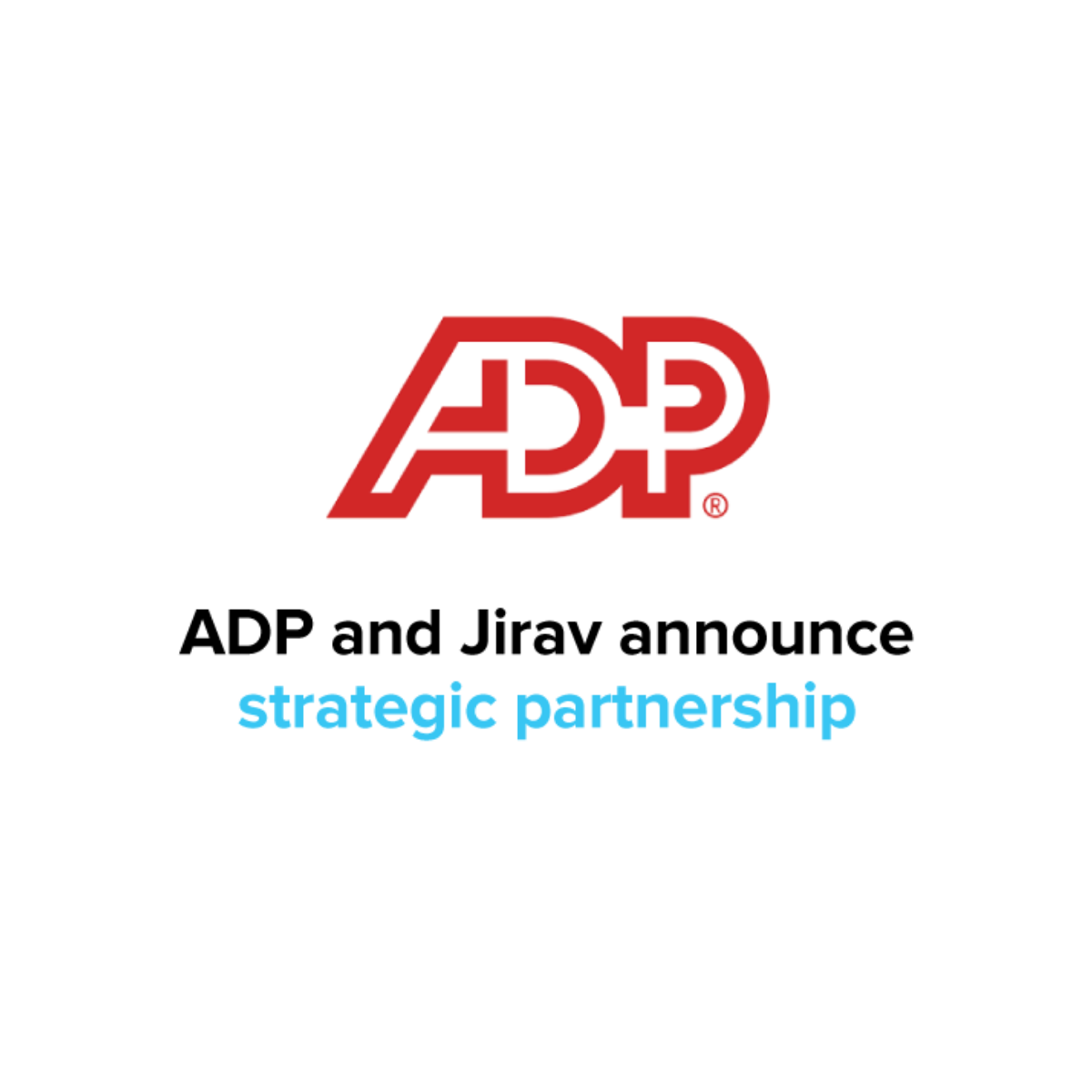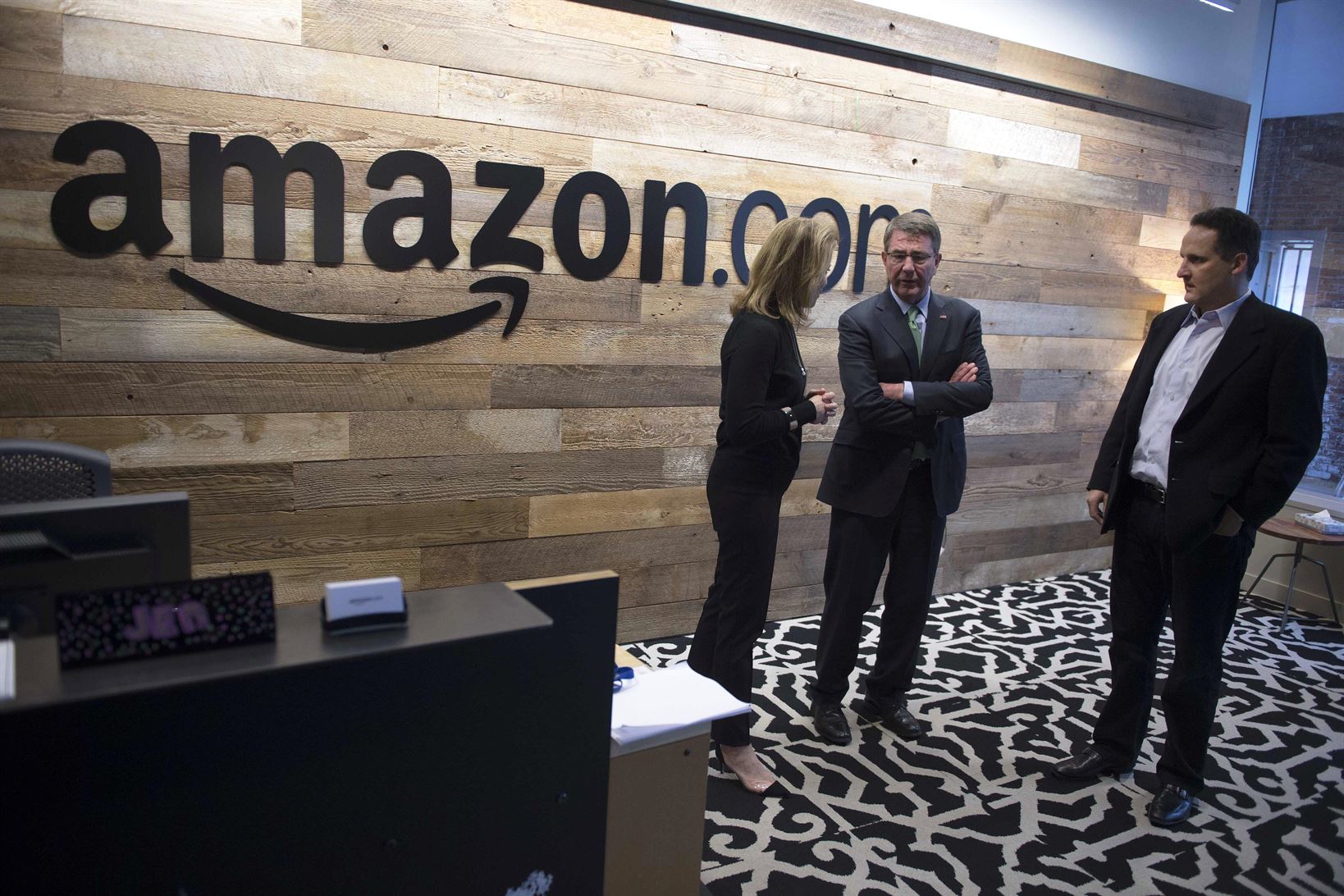The latest trend hitting the accounting industry is the expansion into client advisory services (CAS), and for good reason.
More firms are looking beyond tax season and audit services to offer a variety of client advisory services such as forecasting, budgeting, and strategy. According to a survey released last year from consulting firm The Growth Partnership, accounting firms which produce more revenue from audits and reviews are actually less profitable. Instead, firms doing the least amount of this work — 8.6% of their total fees, on average — were 34% more profitable than the quartile of firms doing the most audits and reviews (50.7% of their total fees).
What does this mean?
In short, it means there’s plenty of money on the table for firms who are willing to expand into advisory. The last CAS Benchmark Survey from CPA.com found that CAS practices saw a 20% growth rate, with respondents reporting higher net client fees, higher fees per professional, and higher CAS net client fees per client.
There are a number of factors contributing to this trend, including a dramatic shift in client expectations. Let’s dive into what’s driving the change in client expectations, and how firms can respond through fractional CFO services and expanding to CAS practices.
What's driving modern client expectations for fractional CFO and accounting services?
At the risk of sounding like a broken record, we’re living in a volatile business environment. And as a response, the role of the CFO is shifting from Chief “Financial” Officer to Chief “Future” Officer as these leaders are increasingly finding themselves becoming the value partner to the CEOs of their organizations, helping to navigate the turbulence coming out of the marketplace. In a recent webinar with CPA.com, industry expert Tom Hood touched on this concept of the Chief “Future” Officer.
CFOs, and firms that provide fractional CFO services, are seeing an increase in demand for more strategic advisory. What was once a role focused on historical data, core business activity and costs, and descriptive analytics, is now shifting to a more forward-looking mindset. The Chief “Future” Officer is expected to provide strategic foresight, focused on both core and edge business activity, and prescriptive analytics with insight into where the business is headed.
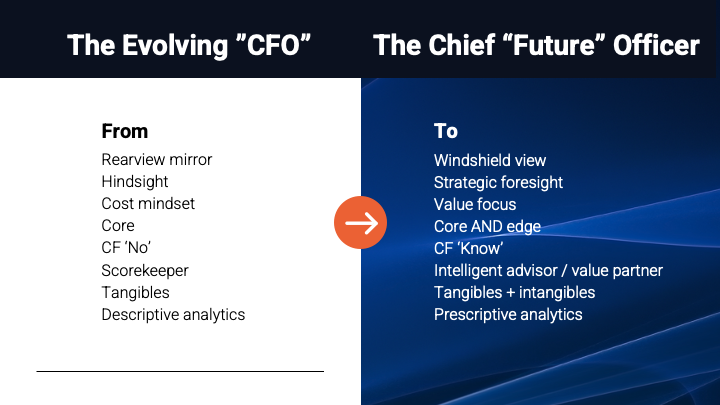
CFOs also need to be able to work cross-functionally, touching every part of the organization and asking the right questions about all business operations. Especially as businesses face the challenges that come with inflation and a possible recession, CFOs and fractional CFO teams will need to shift their focus from purely revenue to include areas like cash flow and workforce planning. They should be able to interpret the metrics and insights that come out of all data sources and how they will affect the business moving forward through any scenario.
Luckily, there are purpose-built technology solutions that can help CFOs not only wrangle all of the data into one place, but analyze it and use it in decision-making as well—but we’ll get to that later in this article.
The same kind of shift is also happening on the accounting firm side of the story: clients are seeking help from their accounting partners on their business models and how to adjust them to account for all of the trends and challenges in the market.
Historically (pun intended), CFOs and firms have been primarily focused on the past. But as the future becomes harder to predict, and macroeconomic factors and global issues like the pandemic affect the business landscape, clients are looking for a trusted advisor to weigh in on more than just their taxes. As discussed in the webinar, clients are now asking for help answering questions like:
- What does our cash forecast look like?
- How can we manage costs and the workforce?
- Can we hire more people/open a new location?
- What happens if we invest more?
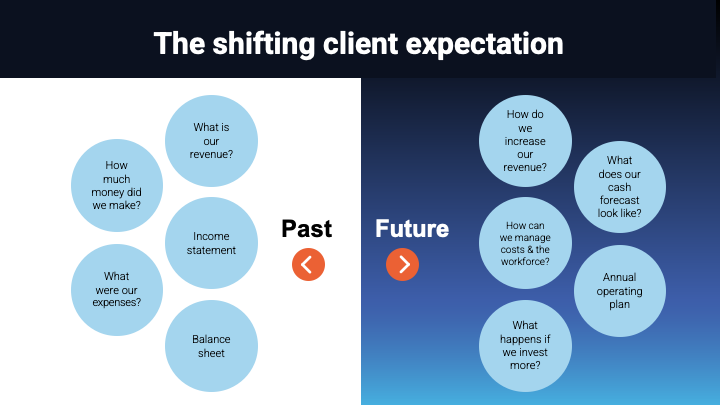
The answers to these questions and more are often revealed in financial models, forecasts, budgets, and other financial planning and analysis (FP&A) deliverables.
How to meet client expectations through FP&A and advisory
Offering FP&A and advisory services benefits both the firm and the clients: firms enjoy more revenue and greater profits from higher net client fees, while clients receive greater value from the services themselves. A recent report by Spotlight Reporting that surveyed 600 accounting professionals found that nearly 80% of respondents plan on offering or expanding their advisory services in the future, while 70% stated that they already perform mentoring, forecasting, or other advisory services. So the question for most firms isn’t why—they’re on board with FP&A and advisory; the main question is how.
The goal of running an advisory practice is to help clients find answers, not to know all of the answers yourself. The discovery process of asking the right questions to get to the answers hidden within the data is the FP&A advisory journey—it helps CFOs and fractional CFO teams connect the dots throughout the organization. Even so, it can still feel intimidating to get started, or to even know where to start in this new practice offering.
Jirav CEO Martin Zych recommends starting the advisory process with one simple question: “What are your goals?” Once the client starts listing their goals and where they hope to take their business, firms can start to piece together the steps that need to be taken to accomplish them. This process identifies the drivers, which will be critical in building the financial models for the business.
A financial model is the summary of a company’s performance based on certain variables (or drivers) that help the business forecast future financial performance. The financial model is the backbone of the entire FP&A advisory process—it’s the canvas with which CFOs can understand the business, and part of the core deliverable for fractional CFO firms.
As we mentioned earlier in the article, there are purpose-built technology solutions that can help firms provide a more efficient and consistent service to clients. Let’s explore what that looks like next.
Advantages of purpose-built FP&A software
Just as a general ledger is the system of record for historical financial data, FP&A tools (like Jirav) are the systems of record for the forward-looking data. Finance leaders who work out of spreadsheets and other tools not purpose-built for FP&A spend hours upon hours just collecting the data and getting it all in one place. From there, financial models, forecasts, budgets, and other planning deliverables must be built manually, and are more prone to error. Spreadsheets can work for ad hoc analysis and one-off, five-tab models, but are not an ideal solution for scaling, growing businesses.
With a cloud-based FP&A tool, integrations with all the main data sources automatically pull in all of the financial and non-financial data necessary to begin analyzing the data for CAS deliverables like forecasts, budgets, and plans.
And, as Martin mentioned in the webinar, FP&A solutions give CFOs and firms the ability to apply a consistent methodology with repeatable patterns and processes across clients. And while each business is unique, the core mechanics of a financial model can be repeated to save time and make each client’s experience more efficient.
As an example, the average fractional CFO firm has eight clients per staff member—starting models from scratch for each of those eight clients takes time away from having those valuable advisory meetings and conversations. With a tool like Jirav, the modeling process can be standardized for quicker time-to-value.
Hear from the experts
As businesses encounter the various macroeconomic factors affecting today’s market, they’re expecting more from their fractional CFO services. For firms who are passionate about becoming that trusted advisor to their clients (and want to bring in more revenue), expanding to offer client advisory services is the smartest move.
In our latest webinar with CPA.com, Martin Zych and Tom Hood discuss this shift in client needs and expectations for fractional CFO services, and how CAS is the best response for firms. The webinar is offered on-demand for you to view at your convenience—watch now!







